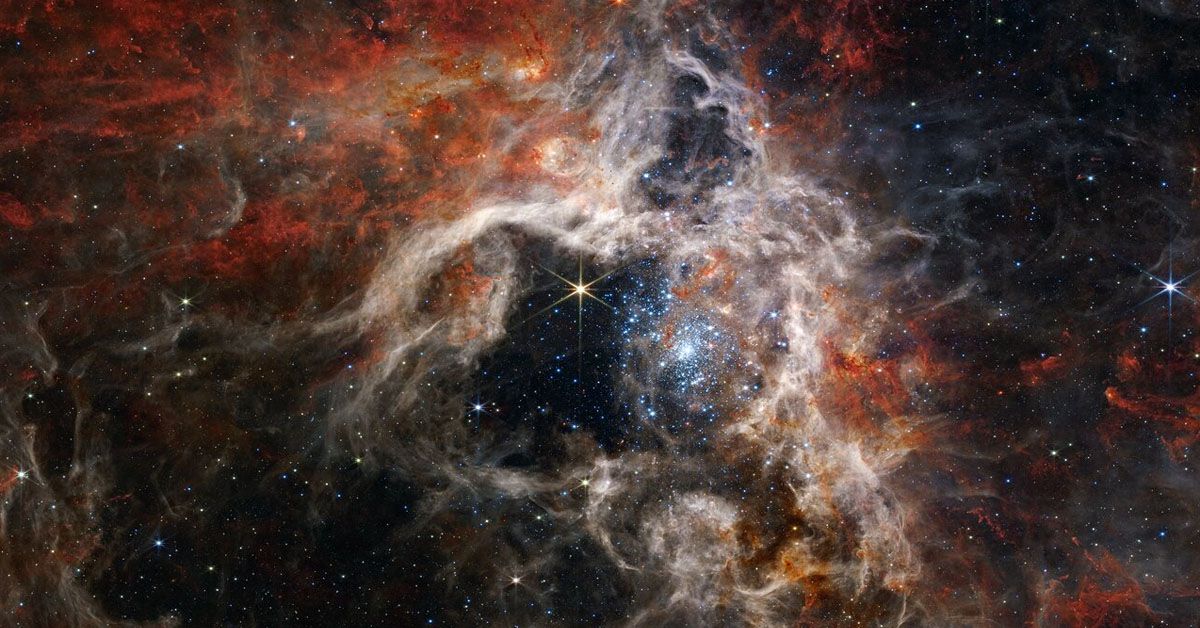In the cosmic panorama, the James Webb Space Telescope (JWST) and its reliable associate, the Near-Infrared Camera (NIRCam), stand ready to command the limelight. This marvel of technology is on the brink of dramatically reshaping the contours of space exploration, altering our perception and comprehension of the universe profoundly. Equipped with NIRCam's powerful capabilities, JWST signifies a monumental advancement in our endeavor to decode cryptic cosmic patterns. In a departure from its precursor, the Hubble Space Telescope, JWST's NIRCam possesses the ability to delve into the more elusive, shadowy recesses of the universe by picking up infrared light, a genuinely groundbreaking function.
What is NIRCam?
The Near-Infrared Camera, or NIRCam, is the beacon guiding us through the infinite expanse of the cosmos. As the primary imager aboard the James Webb Space Telescope (JWST), NIRCam stands at the forefront of our quest to decode the universe. More than just a camera, NIRCam is the workhorse of Webb, tirelessly capturing detailed snapshots of celestial bodies, with each image bringing us one step closer to unraveling the mysteries of the cosmos.
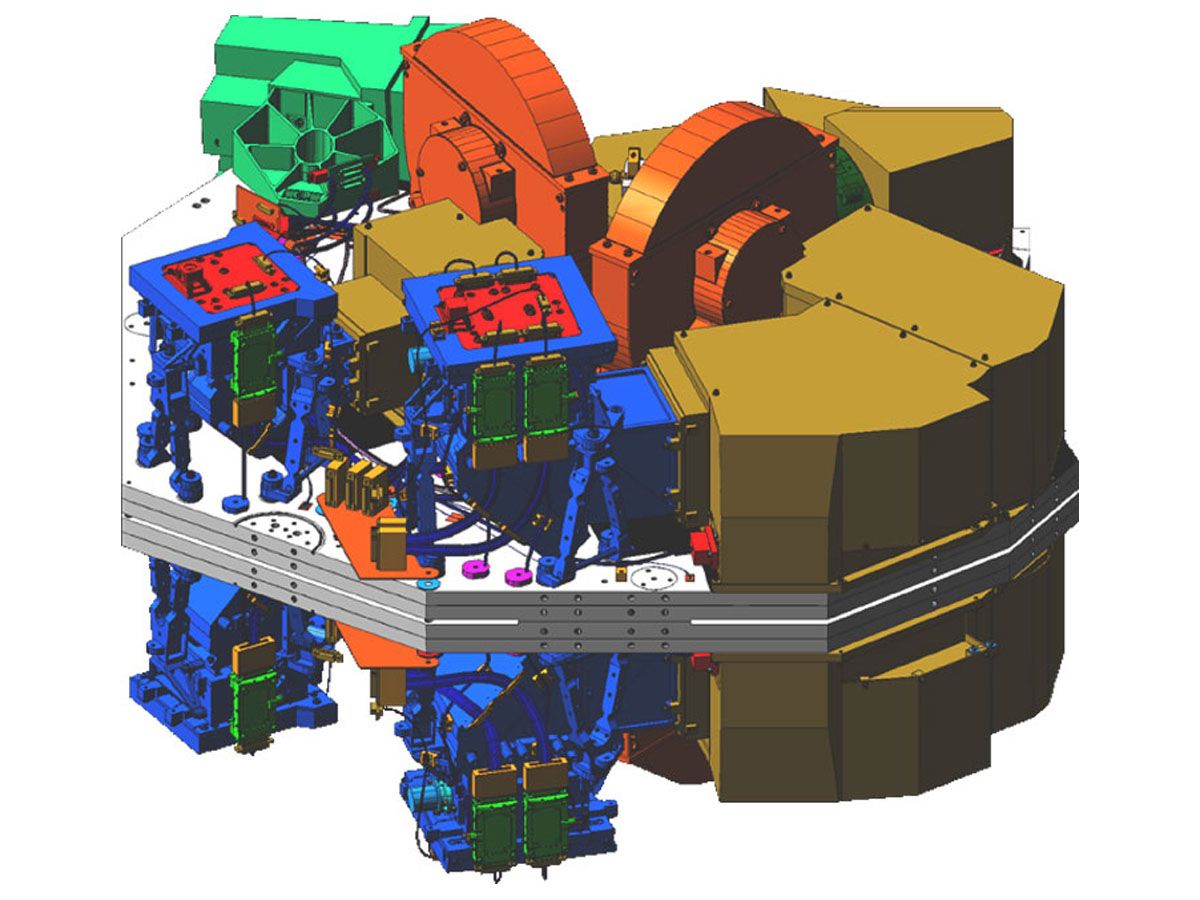
NIRCam's design is a marvel of engineering and technology. It comprises two completely redundant modules that work in perfect harmony, each capable of operating independently yet designed to function simultaneously. It's not just a camera, but two sophisticated imagers standing side by side, capturing the universe in unprecedented detail.
How NIRCam Works?
At the heart of NIRCam's design is a pair of dual modules, each equipped with a beam splitter. This splitter divides incoming light into short and long wavelength channels, allowing NIRCam to capture a broader spectrum of light. This ingenious design enables NIRCam to function essentially as two cameras in one, each module meticulously observing the universe across varying wavelengths.

NIRCam's multi-filter imaging approach is another innovation. Just like an artist uses different colors to create a masterpiece, NIRCam takes multiple images of the same target through different filters to produce a color image. This is enabled by pupil and filter wheels, which control the passage of light through various filters.
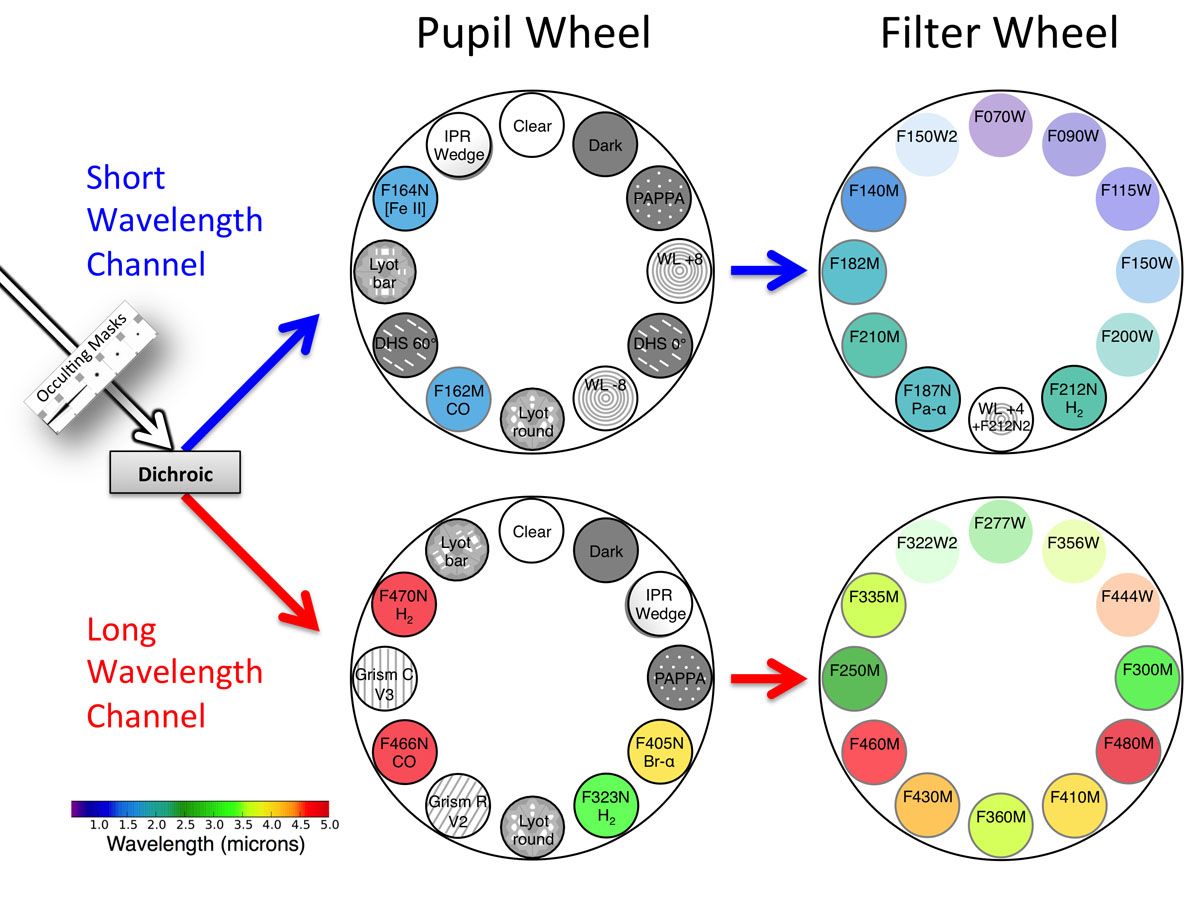
But NIRCam's capabilities don't end there. It can operate in WideField Spectroscopy mode, passing light through a prism to create a spectrum for every source in its field of view. In Time Series mode, NIRCam takes a series of short exposures to measure variations in brightness and spectrum over time. This mode is particularly useful for studying dynamic celestial events, such as exoplanets passing behind their host stars.
NIRCam also uses coronagraph masks to block out bright objects, allowing astronomers to study fainter objects nearby. One of its first missions will involve studying the protoplanetary disk surrounding the star Beta Pictoris, providing valuable insights into the formation of planets.
NIRCam and Other Instruments on JWST
While NIRCam plays a pivotal role in JWST's mission, it's not alone in its cosmic endeavors. The telescope is also equipped with other state-of-the-art instruments like NIRSpec, the workhorse spectrograph, NIRISS, the Near-Infrared Imager, and Slitless Spectrograph, bundled with Fine Guidance Sensors.
While similar in their pursuit of the infrared spectrum, each of these instruments serves a unique purpose. NIRSpec, for instance, uses an array of micro shutters to analyze light's spectrum from specific regions of the field, while NIRISS excels in high-performance spectroscopy and imaging.
NIRCam, NIRSpec, and NIRISS, although operating in the same wavelength range, complement each other in their functionality. Together, they form a formidable team that enables JWST to explore the universe across a wide range of wavelengths and observation modes, propelling our understanding of the cosmos to unprecedented heights.
NIRCam: A Deeper Dive
In the realm of exoplanet exploration, NIRCam establishes itself as an essential tool. It enriches our comprehension of these far-flung celestial bodies, offering us the means to delve into their atmospheric characteristics and perhaps suggests the tantalizing possibility of extraterrestrial life. The superior sensitivity and resolution of NIRCam equip it with a unique proficiency in identifying and profiling planets orbiting distant stars.
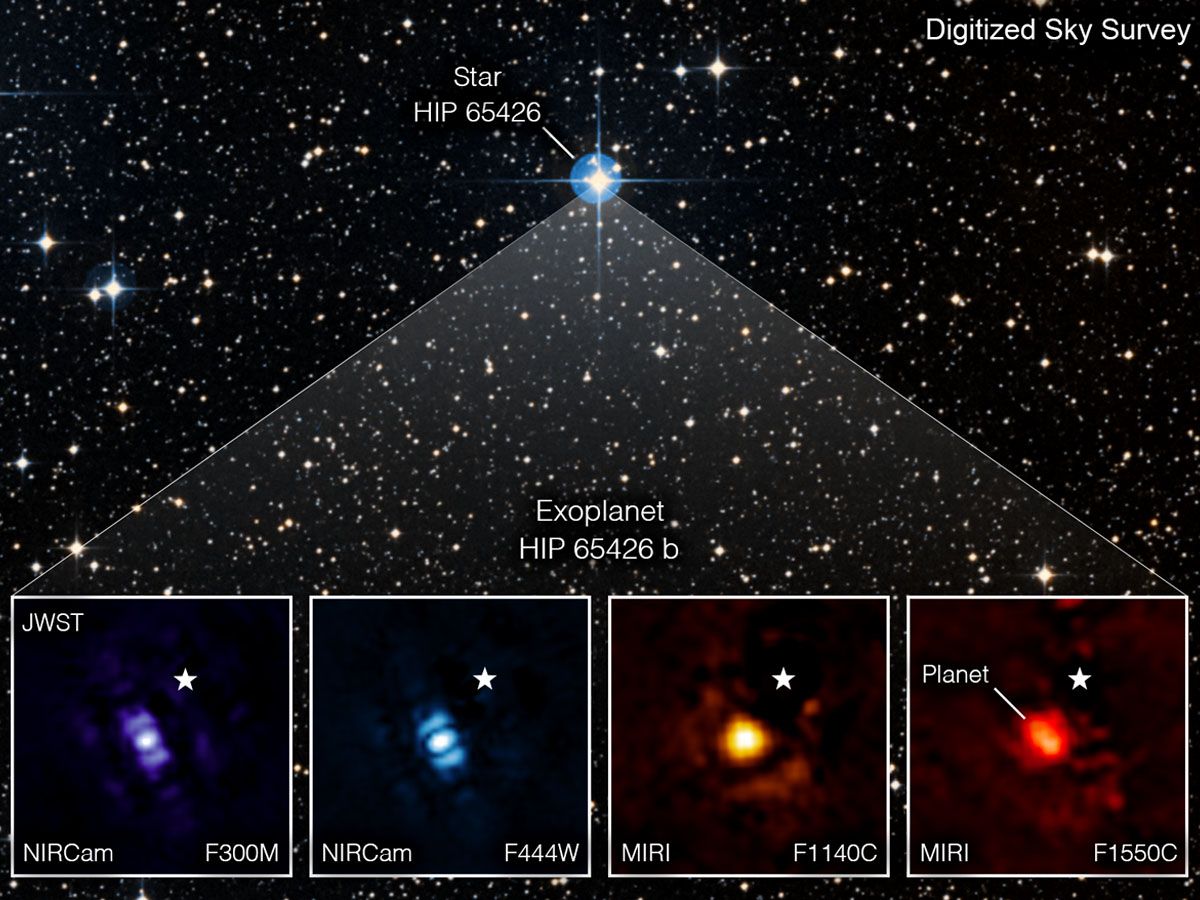
Beyond its primary imaging function, NIRCam also plays a pivotal role in Webb's wavefront sensing and control system. This system is vital for Webb's operation, as it ensures the telescope's 18 primary mirror segments align correctly to form a perfect single mirror. NIRCam, in this regard, is Webb's ophthalmologist, ensuring its 'eyes' can see the universe in crisp detail.
Building of NIRCam
The successful construction of NIRCam is a testament to the collaborative efforts of a diverse team. The project saw the coming together of top-notch scientists and engineers from the University of Arizona and Lockheed Martin’s Advanced Technology Center. This symbiotic partnership leveraged the academic prowess of the University and the technological expertise of Lockheed Martin to create an instrument that has pushed the boundaries of space observation.

Components of NIRCam
NIRCam is a sophisticated piece of technology, comprised of several integral components. At its heart are two cameras, each equipped with a spectrograph and a coronagraph. The cameras capture the beauty of the universe in stunning detail, while the spectrographs analyze the light from celestial objects to reveal their composition, temperature, and motion. The coronagraphs, on the other hand, work to block out the bright light of distant stars, allowing the faint light from orbiting exoplanets to be detected.
NIRCam's Wavelength Range and Fields of View
NIRCam is designed to observe light in the near-infrared part of the electromagnetic spectrum, specifically between wavelengths of 0.6 to 5 micrometers. This range is particularly important for looking through dust clouds to witness the birth of stars and planets, as well as for studying distant galaxies.
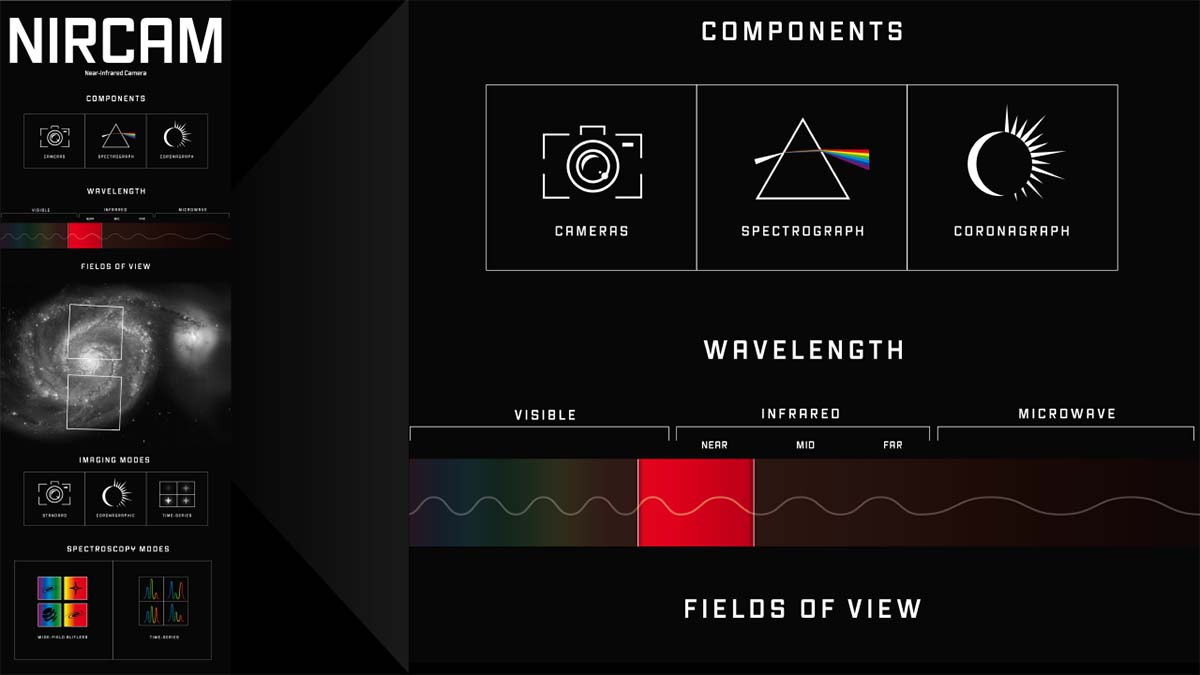
In terms of field of view, NIRCam provides a wide, clear window into the cosmos. Each of its two modules can cover an area of the sky about 2.2 arcminutes on a side, with a total combined field of view of approximately 9.7 square arcminutes. This wide field of view, combined with its high resolution, makes NIRCam a powerful tool for both wide-field surveys and detailed observations.
NIRCam's Imaging and Spectroscopy Modes
NIRCam offers several modes of operation tailored to different observational goals. In Standard Imaging mode, it captures detailed pictures of celestial objects. In contrast, the Coronagraphic Imaging mode uses special masks to block starlight and reveal faint objects such as exoplanets and circumstellar disks. Time-Series Imaging mode is used to monitor changes in the brightness of objects over time, such as the transit of an exoplanet across its host star.
On the spectroscopy side, NIRCam's Wide-Field Slitless Spectroscopy mode enables it to simultaneously capture the spectra of many objects over a large field of view. This mode is particularly valuable for studying distant galaxies and supernovae. Time-Series Spectroscopy, meanwhile, is used to monitor changes in the spectrum of an object over time, providing valuable information on variable objects like pulsating stars and active galaxies.
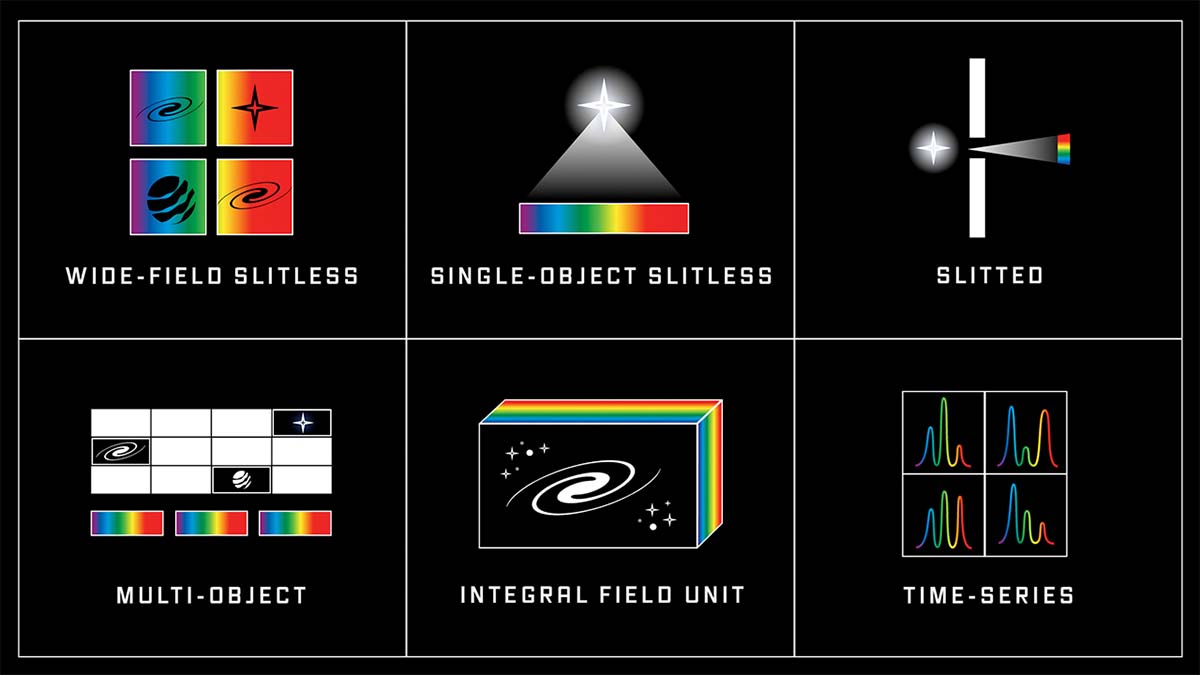
The Beauty and Science of JWST Images
Observing the inaugural images from JWST was an overwhelming and awe-inspiring experience. It was a pivotal moment, as years of dedication towards JWST culminated in this breathtaking spectacle. Each image was a testament to human ingenuity, perfectly capturing the cosmos' grandeur while also reminding us of our tiny place within it.
One image that captured the imagination was a majestic display of cosmic cliffs. Rising towers of interstellar gas and dust, peppered with newborn stars, painted a mesmerizing celestial landscape. This image, a visual feast of color and light, was a poignant reminder of the silent drama unfolding in the universe's distant corners.

Meanwhile, the deep field image offered a different, equally mesmerizing spectacle. This was a window into the edges of the known universe, filled to the brim with countless galaxies. Each galaxy was a whirl of stars, gas, and dust, stretching across billions of years. This image was a surprise, a stark reminder of the universe's vastness, and a testament to the infinite mysteries yet to be uncovered.
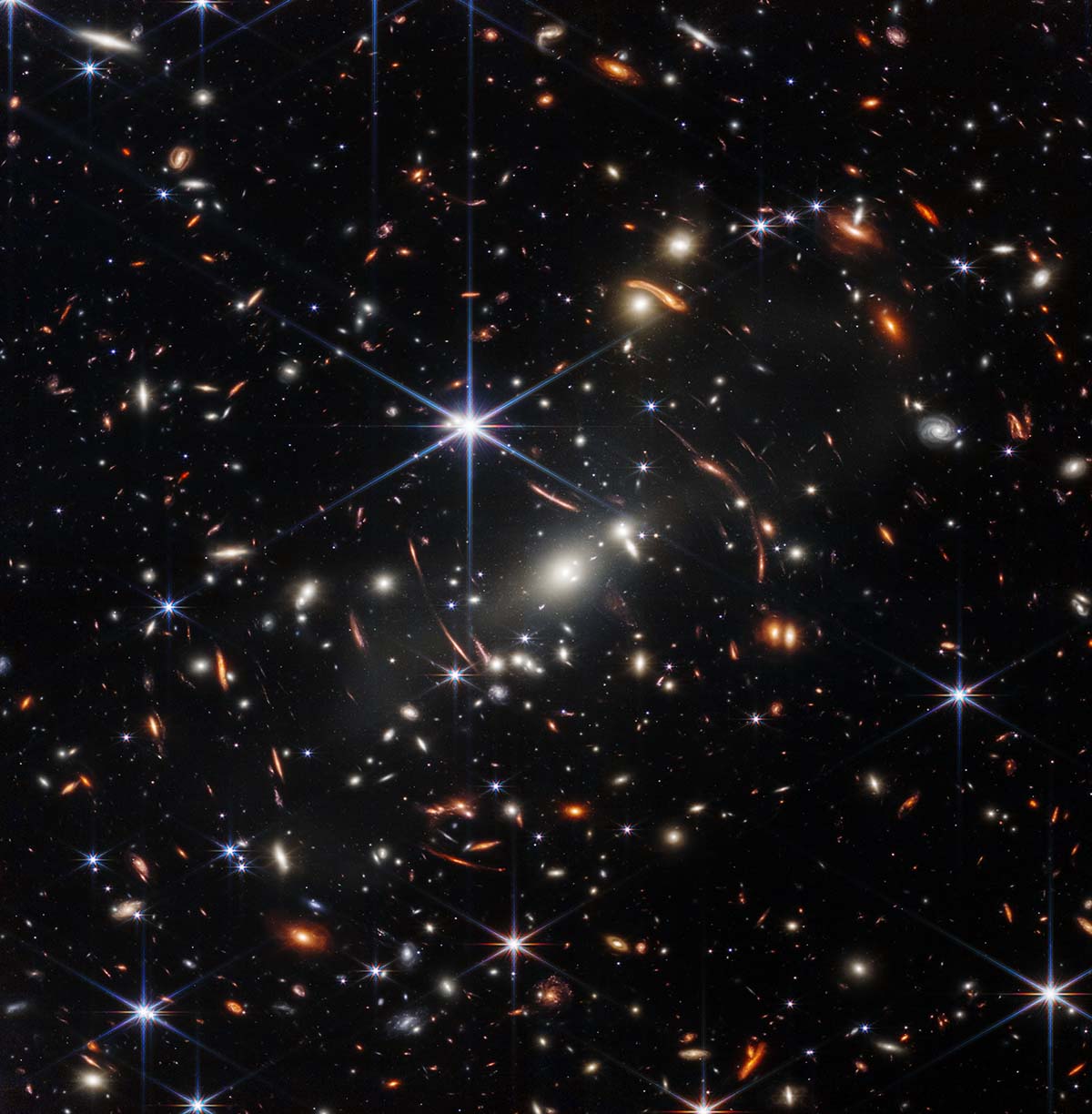
Unveiling the Role of Dust through JWST Studies
Interstellar dust, an often-overlooked component of the cosmos, holds a central role in the life cycle of stars and planets. These minute particles, leftovers from cosmic events, coalesce under gravitational forces to form stars and planets. Therefore, the study of this dust offers invaluable insights into the cosmic process of creation.
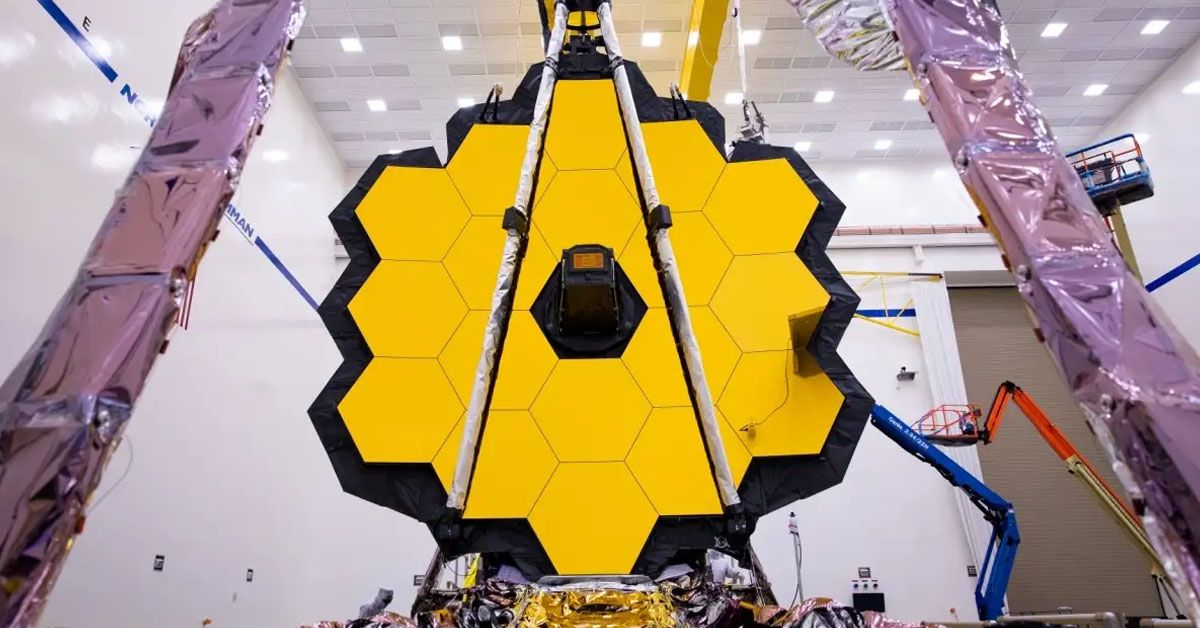
The prospect of studying dust with JWST is indeed thrilling. The telescope's extraordinary capabilities enable us to observe and understand dust's finer details and interactions with other cosmic matter. This opens up a unique perspective on the process of star and planet formation, a process usually shrouded in obscurity.
With cutting-edge instruments like NIRCam, JWST is ideally equipped to study the life cycle of star and planet formation. By monitoring dust across various stages of this cycle, JWST can comprehensively understand the process, from the initial accumulation of dust and gas to the eventual emergence of stars and planets. This knowledge is instrumental in unraveling the intricate dynamics of our cosmos and discerning our place within it.
Sources: nasa.gov / stsci.edu / webbtelescope.org / NASASTEM / LaunchPadAstronomy
